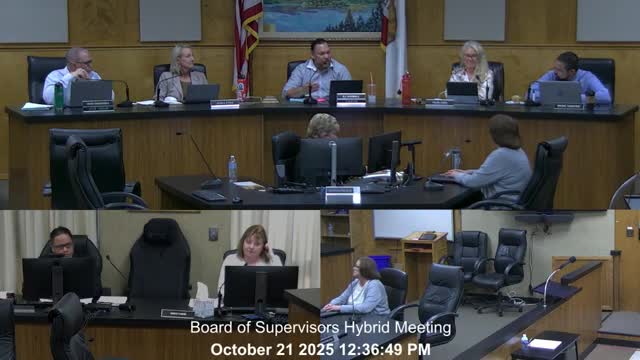County presents draft climate adaptation plan tied to Lake County 2050 update
October 23, 2025 | Lake County, California
This article was created by AI summarizing key points discussed. AI makes mistakes, so for full details and context, please refer to the video of the full meeting. Please report any errors so we can fix them. Report an error »

County staff and consultants presented a draft Climate Adaptation Plan on Oct. 21 as part of the Lake County 2050 process, outlining vulnerabilities, resilience pillars and strategy areas for county and city decision‑makers.
The plan draws from a climate vulnerability analysis that examined eight hazards — drought, extreme heat, wildfire and smoke, floods, landslide/debris flow, severe weather, pests/diseases and human‑health hazards — and assessed 91 population groups and community assets. Staff said wildfire and smoke create the most cross‑sector vulnerabilities countywide; other high vulnerabilities included energy and communications infrastructure and older and manufactured homes.
Planners proposed organizing adaptation measures under 10 pillars of landscape resilience adopted earlier in 2023: air quality, biodiversity conservation, carbon sequestration, economic diversity, fire‑adapted communities, fire dynamics, forest resilience, social and cultural well‑being, water security and wetland integrity. Example strategies include strengthening habitat connectivity, water‑supply resilience projects, resilience hubs for public health, and supporting climate‑resilient agricultural practices.
Supervisors asked how the cap links to the general plan and local projects; staff said the cap will act as a living document, be annexed into other plans such as the Local Hazard Mitigation Plan, and be used to help prioritize grant‑eligible projects. Staff also said the county will solicit tribal review before public draft release and will hold additional public briefings at city councils and advisory committees.
Ending: Staff requested comments and will incorporate input before publishing a public draft; the county plans to use the cap to guide funding requests and coordinate resilience projects across jurisdictions.
The plan draws from a climate vulnerability analysis that examined eight hazards — drought, extreme heat, wildfire and smoke, floods, landslide/debris flow, severe weather, pests/diseases and human‑health hazards — and assessed 91 population groups and community assets. Staff said wildfire and smoke create the most cross‑sector vulnerabilities countywide; other high vulnerabilities included energy and communications infrastructure and older and manufactured homes.
Planners proposed organizing adaptation measures under 10 pillars of landscape resilience adopted earlier in 2023: air quality, biodiversity conservation, carbon sequestration, economic diversity, fire‑adapted communities, fire dynamics, forest resilience, social and cultural well‑being, water security and wetland integrity. Example strategies include strengthening habitat connectivity, water‑supply resilience projects, resilience hubs for public health, and supporting climate‑resilient agricultural practices.
Supervisors asked how the cap links to the general plan and local projects; staff said the cap will act as a living document, be annexed into other plans such as the Local Hazard Mitigation Plan, and be used to help prioritize grant‑eligible projects. Staff also said the county will solicit tribal review before public draft release and will hold additional public briefings at city councils and advisory committees.
Ending: Staff requested comments and will incorporate input before publishing a public draft; the county plans to use the cap to guide funding requests and coordinate resilience projects across jurisdictions.
View the Full Meeting & All Its Details
This article offers just a summary. Unlock complete video, transcripts, and insights as a Founder Member.
✓
Watch full, unedited meeting videos
✓
Search every word spoken in unlimited transcripts
✓
AI summaries & real-time alerts (all government levels)
✓
Permanent access to expanding government content
30-day money-back guarantee

